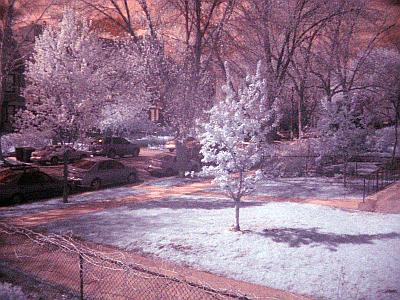http://www.lib.uchicago.edu/~dean/blog/ir2.jpg
http://www.lib.uchicago.edu/~dean/blog/ir-normal.jpg
These were shot with a near-IR filter over my camera
(a near infrared filter being two pieces of fully exposed color negative film).
If you swap the RGB colors around, you can eventually get something almost, but not quite entirely unlike, normal. http://www.lib.uchicago.edu/~dean/ir2-rgb-bgr.jpg
Some more (post-processing):
http://www.lib.uchicago.edu/~dean/blog/ir1-auto.jpg

http://www.lib.uchicago.edu/~dean/blog/ir2-colorswap.jpg
From looking at the RGB histograms out of the camera, it appears that the red and blue filters let the most near-IR through. Traditionally this is the case. The red lets very near-IR through, and the blue lets in IR at double the blue wavelength (a 450nm blue filter will let in 900nm IR, e.g.). The blue channel shows the most chlorophyll fluorescence too.
No comments:
Post a Comment